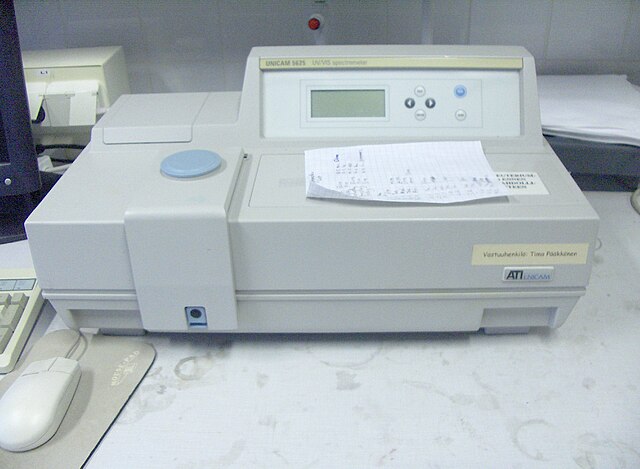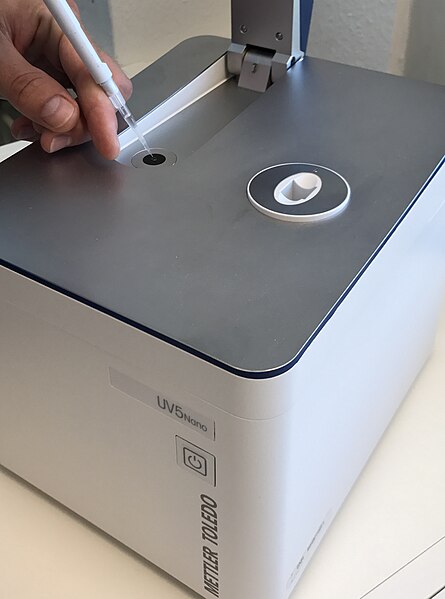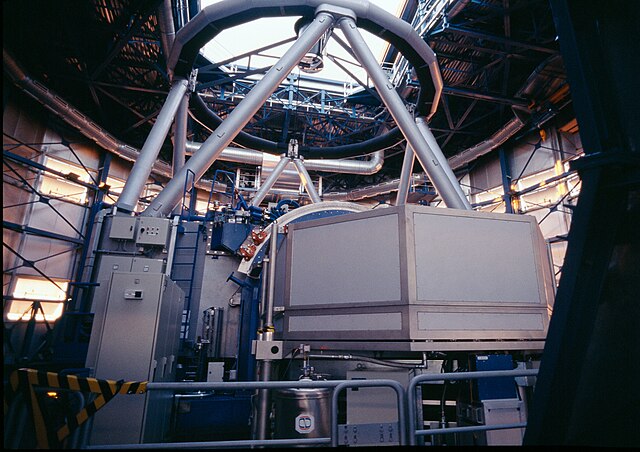Spectrophotometry is a branch of electromagnetic spectroscopy concerned with the quantitative measurement of the reflection or transmission properties of a material as a function of wavelength. Spectrophotometry uses photometers, known as spectrophotometers, that can measure the intensity of a light beam at different wavelengths. Although spectrophotometry is most commonly applied to ultraviolet, visible, and infrared radiation, modern spectrophotometers can interrogate wide swaths of the electromagnetic spectrum, including x-ray, ultraviolet, visible, infrared, and/or microwave wavelengths.
Table-top spectrophotometer
Beckman IR-1 Spectrophotometer, ca. 1941
Hand-held spectrophotometer used in graphic industry
METTLER TOLEDO UV5Nano Micro-Volume Spectrophotometer
Spectroscopy is the field of study that measures and interprets electromagnetic spectra. In narrower contexts, spectroscopy is the precise study of color as generalized from visible light to all bands of the electromagnetic spectrum.
An example of spectroscopy: a prism analyses white light by dispersing it into its component colors.
A huge diffraction grating at the heart of the ultra-precise ESPRESSO spectrograph.
UVES is a high-resolution spectrograph on the Very Large Telescope.
Atomic spectra comparison table, from "Spektroskopische Methoden der analytischen Chemie" (1922).








